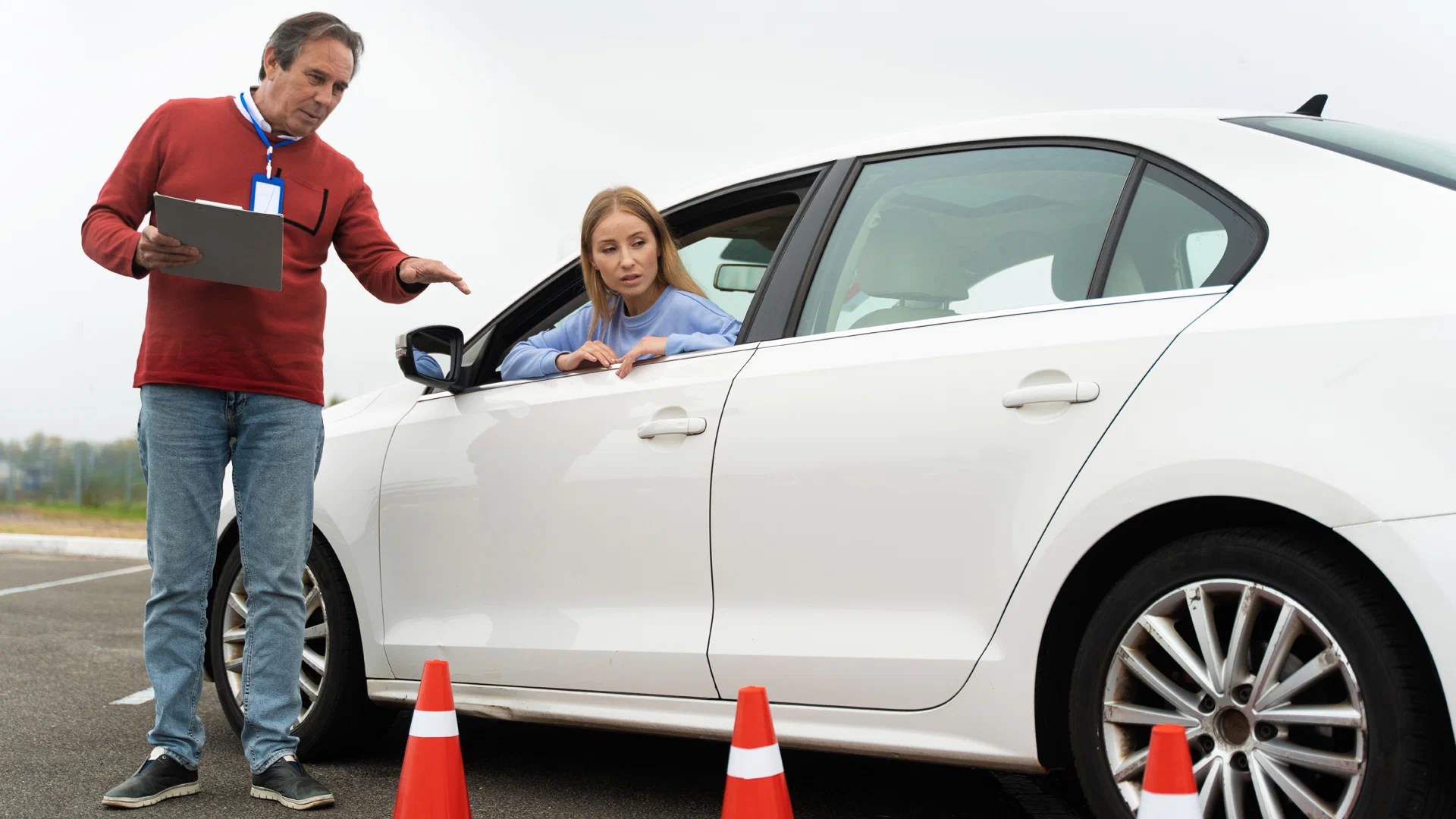Smart Driving School focuses on helping UK learners become safe, confident, and street-smart drivers. With structured lessons, practical road experience, and expert guidance, students learn not only how to pass their driving test but how to drive smartly and responsibly in real-world traffic conditions.
Understanding the Concept of a Smart Driving School
A smart driving school isn’t just about learning to move a car. It’s about understanding the rhythm of the road, reading traffic intelligently, and reacting calmly in challenging situations. A truly street-smart driver knows how to adapt to weather changes, anticipate the behaviour of other drivers, and make quick yet safe decisions.
Driving today requires much more than technical ability. Modern vehicles, smart road systems, and advanced traffic management in the UK mean drivers must be alert and well-trained. A smart driving school ensures that learners understand every aspect of driving—from safety rules to eco-friendly habits and defensive techniques that protect everyone on the road.
Why “Street Smart” Driving Matters More Than Ever
Being a street-smart driver means being aware of your surroundings and making proactive decisions. The UK’s busy roads, particularly in urban areas, demand a higher level of alertness.
A street-smart approach helps drivers:
- Anticipate sudden movements by other road users.
- Understand pedestrian behaviour in cities and residential zones.
- Handle complex roundabouts and junctions safely.
- Manage high-speed roads with calm and control.
In essence, street-smart driving goes beyond basic skills. It’s the mindset that separates responsible drivers from reckless ones.
What Makes a Driving School Truly “Smart”
A smart driving school focuses on modern teaching methods and data-driven progress tracking. It’s not just about passing a test—it’s about mastering driving for life. Some key features include:
- Personalised Lesson Plans: Training is adjusted according to individual learning speed and confidence levels.
- Digital Learning Tools: Simulated driving environments and online theory materials improve knowledge retention.
- Road Safety Emphasis: Students are taught defensive driving techniques and hazard awareness.
- Local Area Training: Routes are chosen to reflect real UK driving conditions—from narrow city lanes to dual carriageways.
By combining traditional instruction with modern tools, learners get an experience that’s educational, interactive, and confidence-building.
Building Confidence Behind the Wheel
Confidence is often the difference between a hesitant driver and a safe one. A well-structured driving course builds confidence through gradual exposure. The early lessons may focus on control and observation, while advanced sessions teach parallel parking, lane discipline, and motorway driving.
Instructors aim to make learners feel comfortable in every situation—be it city congestion, wet weather, or night-time driving. Step by step, students develop not just technical skills but also the mental readiness needed for independent driving.
The Role of Theory and Hazard Perception
The theory test is not just a formality; it’s the foundation of safe driving. A smart driving school prepares students thoroughly for the UK’s theory and hazard perception tests.
Students learn about:
- UK traffic signs and road markings.
- Safe distances and speed management.
- The Highway Code and its practical application.
- Recognising and reacting to potential hazards on time.
Using mock tests and interactive study sessions helps learners retain information and approach the official exams with confidence.
Learning the “Smart” Way: From Basics to Mastery
Driving education should be a journey of discovery. From the first lesson, learners begin understanding how vehicle control, road awareness, and quick decision-making work together. A smart approach involves:
- Stage-by-Stage Learning: Beginners focus on clutch control and mirror use; later, lessons shift to complex manoeuvres and test routes.
- Feedback-Oriented Progress: Instructors provide constructive feedback after each lesson, allowing students to track improvement.
- Situational Awareness: Each driving session introduces real-life conditions, such as dealing with cyclists, roundabouts, or rural roads.
This process ensures drivers aren’t just test-ready but life-ready.
How Street Smart Driving Helps You Pass Faster
While speed shouldn’t replace quality, a street-smart strategy often leads to quicker progress. When learners understand not just “how” but “why” things happen on the road, they react better and make fewer errors.
Some common benefits include:
- Quicker decision-making during test conditions.
- Fewer repeated lessons due to improved understanding.
- Strong hazard perception skills that impress examiners.
- Better handling of unpredictable road scenarios.
Learning to drive smartly equips students with the same techniques examiners look for—control, awareness, and responsibility.
Safety as the Foundation of Every Lesson
Safety remains the cornerstone of smart driving education. UK roads are diverse—from urban zones with heavy traffic to rural routes that demand sharp awareness. Every lesson reinforces the idea that safety is not optional but essential.
Instructors encourage learners to:
- Maintain safe distances.
- Use mirrors regularly and accurately.
- Follow speed limits with awareness, not fear.
- Apply defensive driving techniques in all settings.
The result is a new generation of drivers who value safety as much as skill.
Understanding UK Road Environments
The UK has unique road conditions that differ from many other countries. Learners benefit greatly from familiarising themselves with:
- Narrow lanes and parked vehicles in residential areas.
- Roundabouts that require both confidence and timing.
- Rural roads with sharp bends and limited visibility.
- City driving with pedestrians, cyclists, and public transport.
A smart driving school ensures learners face these challenges in controlled conditions, helping them adapt seamlessly once they pass their test.
Preparing for the Practical Driving Test
The UK driving test evaluates awareness, control, and composure. Smart driving lessons are built around these criteria to ensure learners perform naturally and confidently.
Preparation involves:
- Mock tests under real conditions.
- Familiarity with common test routes.
- Focused practice on manoeuvres like parallel parking and emergency stops.
- Emphasis on observation and anticipation skills.
When students know exactly what to expect, anxiety decreases and success rates improve.
Developing a Lifelong Driving Mindset
Passing the test is only the beginning. A smart driving education focuses on lifelong habits—eco-friendly driving, patience, and courtesy.
This mindset benefits everyone:
- Drivers save fuel by anticipating traffic flow.
- Roads become safer when everyone respects rules.
- Communities enjoy reduced accidents and smoother traffic.
The goal is to build responsible drivers who see driving as a privilege, not just a convenience.
Technology and Smart Learning Integration
The modern world of driving education incorporates technology to enhance the learning process. From interactive apps to in-car feedback systems, learners receive constant guidance and performance insights.
Digital progress tracking allows instructors to identify strengths and weaknesses quickly. Learners can review their performance and understand exactly where improvement is needed. This data-driven approach ensures continuous development until mastery.
The Importance of Choosing Quality Instruction
Not all driving instruction is the same. A smart approach means learners are guided by qualified professionals who understand modern road challenges. Good instruction focuses on clarity, patience, and adaptability.
Instructors ensure that every lesson builds confidence without pressure. Their expertise transforms nervous beginners into composed, capable drivers.
How Street Smart Skills Extend Beyond the Test
Once the test is over, the real-world journey begins. Street-smart skills prove invaluable in daily life:
- Navigating unfamiliar routes confidently.
- Adapting to changing weather conditions.
- Handling unexpected driver behaviours calmly.
- Avoiding risky situations through anticipation.
These habits not only keep drivers safe but also make driving more enjoyable and efficient.
Adapting to the UK’s Evolving Road Systems
The UK continues to modernise its road systems, with smart motorways, electric vehicle infrastructure, and digital road signs becoming more common. Drivers trained in smart driving schools learn to adapt easily to these evolving technologies.
They understand how to use in-car systems responsibly, interpret new signage, and maintain focus even with multiple stimuli—skills essential for the next generation of drivers.
How a Smart Driving Education Shapes Responsible Citizens
Driving is a responsibility that extends beyond the individual. Street-smart drivers contribute to safer roads and more respectful communities. They practice patience, yield when appropriate, and respect vulnerable road users.
A quality driving education instils values that go beyond test preparation—it shapes individuals into responsible citizens who understand their role in maintaining road harmony.
Conclusion: Drive Smart, Stay Safe, and Be Confident
A Street Smart Driving School prepares learners not just to pass, but to excel. It builds a foundation of safety, awareness, and confidence that lasts a lifetime. Street-smart drivers are alert, responsible, and ready for any challenge the UK’s roads present.
Whether navigating busy urban streets or calm rural routes, smart driving principles ensure every journey is safe, efficient, and enjoyable. The road to success begins with learning the smart way—where skill meets awareness, and confidence meets responsibility.


